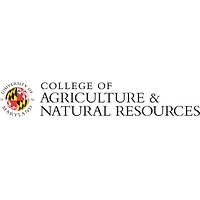Project Uses AI, Machine Learning to Validate Cyclospora Inactivation Methods

iStock / Getty Images Plus / Ekaterina-84
Scott Lenaghan, Ph.D., University of Tennessee, is enlisting artificial intelligence and machine learning to speed the detection of the infectious life stage of Cyclospora cayetanensis.
“Right now, the only way to know whether it’s viable is a sporulation assay,” he said. “You have to determine that they have sporulated, and the whole process is labor intensive.”
As part of the two-year project, which is supported by Center for Produce Safety, Dr. Lenaghan and his colleagues, Qixin Zhong, Ph.D. and Mark Morgan, Ph.D., hope to significantly increase the number of potential Cyclospora inactivation methods for which researchers are able to screen. He and his colleagues will validate four inactivation strategies: gamma radiation, ultraviolet light, ozonation, and chlorine dioxide gas. In addition, they plan to screen numerous antimicrobials and identify at least two novel inactivation methods.
Dr. Zhong has developed a library of generally recognized as safe (GRAS) compounds that will be screened for their potential to inactivate Cyclospora. Morgan brings expertise in process engineering with a focus on ozonation and chlorine dioxide.
Cyclospora has a complex lifecycle and requires a human host as an intermediary to complete it. An infected human sheds unsporulated—or immature, non-infective—oocysts in their feces. It takes one to two weeks of favorable conditions outside the host for the oocysts to mature, sporulate, and become infective to a human who consumes them.
As part of their initial proof-of-concept trials, Dr. Lenaghan and his colleagues will use Eimeria oocysts as surrogates for Cyclospora oocysts. Both pathogens are protozoan and have similar lifecycles and appearances; however, Eimeria oocysts, which are found in poultry droppings, are more readily available than Cyclospora oocysts.
In the past, scientists would incubate a sample for several days and use a microscope to determine whether Cyclospora oocysts were viable and had sporulated. Now, Dr. Lenaghan and his researchers have enlisted machine learning and AI that involves a computerized system to compare microorganisms in a sample to an image library of confirmed pathogens. The more samples that are run, the more the system “learns” how to identify the target organism. The researchers also will use robotics to automate the process.
The first step included running samples through the high-throughput system to determine how accurate it was in identifying oocysts. Dr. Lenaghan said they have reached a 95% confidence level. At present, the researchers are working to train the system to differentiate between sporulated and non-sporulated oocysts.
“We have a training set of thousands of images of oocysts,” Dr. Lenaghan said. “We manually identify sets that are sporulated or non-sporulated, then train the system.”
Once system training is complete, the researchers will run samples of oocysts through the system while a human operator simultaneously scores the results to determine accuracy. For this, they will use Eimeria oocysts obtained from the U.S. Department of Agriculture. Their goal is to achieve an equally high confidence level of identification.
The second part of their research will involve validating strategies that use gamma radiation, ultraviolet light, ozonation, and chlorine dioxide gas to inactivate Cyclospora oocysts.
Finally, they will screen additional compounds, including some chemicals and washes currently used in agricultural systems. The high-throughput system will allow them to examine different concentrations. Without artificial intelligence and machine learning, Dr. Lenaghan said screening this many compounds would likely be impossible.
The research project will also include an economic analysis of the general costs of each treatment.
Looking for a reprint of this article?
From high-res PDFs to custom plaques, order your copy today!




.png?height=200&t=1699369261&width=200)




